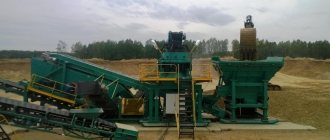Job description of a foreman (work performer)
1. GENERAL PROVISIONS
1.1. This job description defines the functional responsibilities, rights and responsibilities of the Work Foreman (foreman), hereinafter referred to as foreman.
1.2. The foreman is appointed to the position and dismissed from the position in the manner established by the current labor legislation by order of the head of the enterprise.
1.3. The foreman belongs to the category of specialists with a leadership function.
1.4. The tasks and job functions that must be performed by the foreman are set out in the functional responsibilities section of this instruction.
1.5. The foreman reports directly to the chief engineer.
1.6. Directly subordinate to the foreman is a foreman, whose responsibilities include the functions of a foreman and the performance of work related to ordering, receiving, distribution, control of consumption, write-off of inventory items at the facility assigned in accordance with the order. Also, all employees present and performing work are subordinate to the foreman, with the exception of those belonging to other structural divisions.
1.7. The foreman bears personal responsibility for the safety of employees carrying out their activities at the entrusted facility, with the exception of persons carrying out their activities within the framework of civil law relations.
1.8. During the absence of the foreman, his duties are performed by a person authorized by order of the head of the enterprise to perform the relevant duties.
1.9. To ensure his activities, the foreman is given the right to sign organizational and administrative documents on issues included in his functional responsibilities.
1.10. The foreman must know:
- organizational and administrative documents and regulatory materials of higher and other bodies relating to the production and economic activities of the facility;
- organization and technology of finishing and general construction works;
- design and estimate documentation for work performed at the site;
- building codes and regulations, technical conditions for the production and acceptance of work performed;
- forms and methods of production and economic activity at the facility;
- standards and prices for work performed;
- legislative and regulatory legal acts on remuneration;
- scientific and technical achievements and experience in organizing construction production;
- fundamentals of economics, organization of production, labor and management;
- labor legislation;
- internal labor regulations;
- rules and regulations of labor protection.
2. QUALIFICATION REQUIREMENTS.
2.1. A person with a higher professional (technical) education and work experience in construction, including in engineering positions for at least 3 years, or a secondary vocational (technical) education and work experience in construction, including in engineering, is appointed to the position of foreman. technical positions for at least 5 years.
3. JOB RESPONSIBILITIES
3.1. Carry out your activities in strict accordance with this job description, Internal Labor Regulations, orders and instructions of the head of the enterprise, the chief engineer, and in matters of control and coordination - the deputy head for internal control and coordination.
3.2. Provide management and support of production and economic activities at the execution site, both subcontracting and general contracting.
3.3. Ensure the fulfillment of production tasks for types of work at the facility for delivery to the general contractor in the case of a subcontract and to the customer in the case of a general contract within the time limits established by the work schedule for all quantitative and qualitative indicators in compliance with the work production plans.
3.4. Organize work in accordance with design documentation, construction codes and regulations, technical specifications and other regulatory documents.
3.5. Ensure compliance with the technological sequence of work at the facility.
3.6. Ensure timely receipt of technical documentation for work on site.
3.7. Implement measures to increase the level of mechanization of work performed, introduce new equipment, improve labor organization, reduce the cost of work, and use materials economically.
3.8. Prepare requests for construction equipment, transport, mechanization, materials, structures, parts, tools, inventory and ensure their effective use. Participate in the reception, accounting, distribution and control over the use of inventory, together with the foreman and (if available) the storekeeper of the intermediate warehouse, organize on-site storage and protection of material assets.
3.9. Take into account the work performed, draw up technical documentation.
3.10. Participate in the delivery of completed volumes of work, individual stages and work packages to customers.
3.11. Prepare the scope of work for subcontractors and participate in the acceptance of work performed by them.
3.12. Set production tasks for the foremen according to the volume of work performed, and monitor their implementation.
3.13. Instruct workers directly at the workplace on safe methods of performing work.
3.14. Together with the HR department, ensure painless adaptation of new employees.
3.15. Pay sufficient attention to persons carrying out their activities on the basis of concluded civil contracts, respond to their statements and proposals, and contribute to their minimum downtime.
3.16. Work closely with the subcontractor’s representative (legal entity) at the site, promptly respond to violations of obligations by the subcontractor.
3.17. Ensure the use of technological equipment (scaffolding, scaffolding, protective devices and other devices), construction machines, power plants, vehicles and protective equipment for workers.
3.18. Together with the personnel service, the foreman, control the migration of people at the site (arrival and departure) twice a day, organize a meeting of newly arrived people at the site sent to carry out work by the personnel service of the enterprise.
3.19. Fill out the time sheet. At the end of the calendar month, transfer it to the personnel department for reconciliation.
3.20. Standardize and close the volume of work performed, drawing up a time sheet, both according to the list of employees and performers, and separately. Submit to the chief engineer for approval within the established time frame.
3.21. In a timely manner, draw up and sign acceptance certificates for completed work according to the unified form KS 2.
3.22. In a timely manner, prepare and sign certificates of the cost of work performed and expenses according to the unified form KS 3.
3.23. Draw up an act of hidden work, as well as additional work that was not previously agreed upon, but is necessary during the production of current work.
3.24. Timely prepare a report on the consumption of basic materials in construction in comparison with the consumption determined according to production standards (form M 29).
3.25. Timely provide the chief engineer and the personnel department with ideas about the need to make interpayments to individual employees.
3.26. Monitor compliance with the rules for carrying heavy loads, cleanliness and order in the workplace, and provide workplaces with safety signs.
3.27. Monitor the state of safety regulations and take measures to eliminate identified deficiencies, violations of industrial sanitation rules, and compliance by workers with labor protection instructions. Ensure compliance by employees with production and labor discipline, make proposals to impose disciplinary sanctions on violators.
3.28. Organize work to improve the skills of workers and carry out educational work in the team.
3.29. In case of detection of theft or other emergency circumstances, immediately contact the chief engineer, or the deputy head for internal control and coordination, or the head of the enterprise, and further act in accordance with their instructions. At the same time, ensure the safety of traces of theft, if any.
4. RIGHTS.
4.1. Receive a bonus calculated as a percentage of the volume of work completed signed and approved by the general contractor (customer).
4.2. Demand that the administration of the enterprise provide assistance in the performance of their official duties, including proper social and living conditions.
4.3. The foreman has the right:
- give his subordinate employees instructions and tasks on a range of issues included in his functional responsibilities;
- control the work, implementation of planned tasks, timely execution of individual instructions and tasks of persons subordinate to him;
- request and receive the necessary materials and documents related to the activities of the foreman and his subordinates, obtain information necessary to carry out his activities;
- enter into relationships with departments of third-party institutions and organizations to resolve operational issues of production activities within the competence of the foreman;
- represent the interests of the enterprise in third-party organizations on issues related to the production activities of the enterprise if there is a corresponding power of attorney.
4.4. The foreman has the right to submit proposals for consideration aimed at improving the quality of work and on issues of his activities.
5. RESPONSIBILITY
5.1. For the safety of inventory and equipment in the premises and on the territory of the facility, for improper failure to perform or failure to fulfill the duties provided for in this job description within the limits determined by the labor legislation of the Russian Federation.
5.2. For offenses committed in the course of carrying out their activities - within the limits determined by the administrative, criminal, civil and labor legislation of the Russian Federation.
5.3. For causing material damage - within the limits determined by the current legislation of the Russian Federation.
5.4. The foreman is responsible for:
- results and efficiency of production activities of the entrusted facility;
- failure to ensure the fulfillment of his functional duties, as well as the work of his subordinates on production issues;
- inaccurate information about the status of implementation of work plans of subordinates;
- failure to comply with orders, instructions and instructions from the enterprise administration;
- failure to take measures to suppress identified violations of safety, fire and other rules that pose a threat to the activities of the enterprise and its employees.
- failure to ensure compliance with labor and performance discipline by employees subordinate to the foreman.
6. WORKING CONDITIONS
6.1. The work schedule of the foreman is determined in accordance with the Internal Labor Regulations established at the enterprise.
6.2. In the event of a production need arising related to the performance of work in order to comply with the established delivery deadlines, go to the site on weekends and (or) holidays in accordance with the work schedule on the part of the customer or general contractor with the provision of another day off, adding a day to vacation, or otherwise established by agreement of the parties (employee - foreman - employer - management).
6.3. The foreman remains on site until the last employee subordinate to him leaves.
6.4. Due to production needs, the foreman may go on business trips (including local ones).
6.5. To resolve operational issues related to ensuring production activities, the foreman may be allocated company vehicles.
JOB DESCRIPTION SHEET
| No. | FULL NAME. | Job title | date familiarization | Signature |
Superintendents, like any other profession, have a number of job responsibilities with which they become familiar before employment, for which they are responsible and receive a salary.
A foreman is a person who knows everything about the construction process and manages it
. Subordinate to him is a team of builders, called a brigade, which carries out all his orders.
The work of the foreman consists of:
- organization of work process;
- evaluation of the work performed by the team;
- ensuring that work is completed on time;
- delivery of the finished object to the customer.
IV. Responsibility
The work contractor is responsible for:
1. For improper performance or failure to fulfill one’s job duties provided for in this job description - within the limits determined by the current labor legislation of the Russian Federation.
2. For offenses committed in the course of carrying out their activities - within the limits determined by the current administrative, criminal and civil legislation of the Russian Federation.
3. For causing material damage - within the limits determined by the current labor and civil legislation of the Russian Federation.
4. ____________________________________________________________________
This job description has been developed in accordance with the provisions (requirements) of the Labor Code of the Russian Federation dated December 30, 2001 No. 197 FZ (Labor Code of the Russian Federation) (with amendments and additions), the professional standard “Construction Production Organizer” approved by order of the Ministry of Labor and Social Protection of the Russian Federation Federation dated June 26, 2020 No. 516n (as amended by Order of the Ministry of Labor of Russia dated September 12, 2017 N 671n) and other regulations governing labor relations.
General provisions and functional responsibilities
To the general provisions
The foreman's job responsibilities include the following:
- The foreman is in a leadership position.
- During his absence from the workplace for any reason, the foreman must be replaced by a person authorized by him.
- A candidate for the position of foreman must have a higher technical education and work experience in the construction industry for at least 3 years. Or secondary specialized education and work experience of at least 5 years.
To carry out work activities, an employee must know/be able to
:
- what organizational and administrative documents exist regarding the production and economic activities of the facility, its work, what they are responsible for and how they are correctly drawn up;
- how construction is organized, its technology;
- draw up estimates and work projects;
- all standards for construction and installation work;
- rules for evaluating work and the finished object;
- standards and rules for calculating wages for work performed;
- rules for relationships with suppliers and contractors, from the preparation of documentation to the receipt and payment of goods;
- necessary legislative standards;
- rules for organizing labor regulations and work schedules;
- safety rules when working on a construction site;
- use all equipment necessary for construction.
The foreman is obliged
:
- Manage the process of production and economic activities.
- Ensure that the facility is started and put into operation within the deadlines established by the manager (customer). Create a schedule and scope of work for the day.
- Ensure that all technological processes are carried out in the prescribed manner.
- Identify errors in the work of subordinates and participate in their correction.
- Participate in the development of new methods to improve work activities, while reducing time and financial resources.
- Disseminate and train their subordinates in new methods of construction work.
- Show subordinates, if they lack skills, construction technology.
- Prepare the necessary accompanying primary documentation and prepare a report on the work performed.
- Form applications for rental of construction equipment and purchase of materials.
- Take direct part in the delivery of the object.
- Conduct safety training.
- Organize the arrangement of the workplace, storage of equipment and materials.
- Provide medical care.
- Participate in improving the skills of your employees.
Detailed information on this profession is presented in the lecture.
Who can become a foreman (according to the law)?
The job description of a foreman implies that only a person who has the appropriate education can apply for such a vacancy.
If the potential applicant only has a construction college behind him, then the promising organization will also require three years of work experience as a foreman. Young specialists who have graduated from an institute or university in a relevant field of study have a better chance.
The job responsibilities of a foreman also imply that the applicant must have sufficiently deep knowledge and skills to work with the software that is necessary and relevant today, otherwise one may not even dream of such a position with a high salary.
Labor protection instructions
Superintendents also have established labor safety instructions
which they are required to adhere to while performing their work. Without familiarization with these points of the instructions, the employee cannot begin his duties.
factors affect people:
, How:
- changes in weather conditions;
- small parts flying around from work objects or equipment during construction work;
- presence of a nearby high-voltage electrical network;
- inability to provide sufficient lighting to the construction site;
- risk of falling from a great height;
- risk of other objects falling from a height;
- physical or emotional fatigue.
It is important to remember that there may be danger from
:
- machines and moving mechanisms;
- sharp instruments, sharp or protruding surfaces;
- improper operation of equipment or its malfunction;
- lack or improper use of personal protective equipment;
- non-compliance with work and safety rules at the construction site.
If any situation arises that concerns the performance of work or the health of construction workers, the foreman must report it to his supervisor.
Construction personnel are not allowed on the site without knowledge of all safety instructions and without special equipment. clothes
.
Before starting work, the foreman must ensure that the equipment and tools are in good working order. Smoking, resting and eating should be done in strictly designated areas.
In addition to professional duties, the foreman has a number of rights
who act in the interests of the employee.
The foreman has the right:
- Receive information of interest to him about plans concerning himself, his subordinates and the facility at which he works.
- Make your own adjustments and suggestions to resolve any issues or improve the quality of work.
- Notify superiors about equipment malfunctions or poor quality of materials provided, and also demand their replacement.
- Sign documents that relate to his powers.
- Do not take the crew to the site in the absence of safety measures, work clothes, equipment and tools.
- Ask for an extension of delivery deadlines if work was suspended for reasons beyond anyone’s control, for example, due to weather conditions.
Rights
The foreman has the right:
3.1. Submit proposals on production and economic issues to the management of the enterprise for consideration.
3.2. Receive from managers and specialists of the structural divisions of the enterprise the information necessary to carry out their activities.
3.2. Sign and endorse documents within your competence.
3.3. Require the management of the enterprise to provide assistance in the performance of their official duties and rights.
Responsibility
The foreman bears full or administrative responsibility
for committing actions that are contrary to rules, regulations, agreement or law.
He is responsible for:
- Not doing the job properly or not doing it at all. And also for the consequences that were subsequently received after his actions.
- Actions that may contradict articles of the Criminal, Labor or Civil Codes of the Russian Federation.
- Damage, loss or theft of work property for using it for personal purposes.
- Refusing to provide information or providing false information to your management.
- The result that his team received after completing construction or installation work.
- Refusal to help or inform your subordinates.
- Inaction when security violations are detected.
- Violation of occupational health, safety or fire safety rules.
- Violation of internal regulations established for the entire team at the facility.
- Exceeding authority in relation to his subordinates.
Performance evaluation
The head of the organization must regularly evaluate the professional performance of the foreman. The analysis takes into account knowledge of safety precautions, labor protection, implementation of the production process and its compliance with project documentation. If the above conditions are met, the foreman will be considered a good specialist.
https://youtu.be/BgoyhEABNW8
Scope of activity and impact of decision
The foreman has the authority to give orders and organize work at the construction site. He has every right
give orders and instructions to which subordinates must obey unquestioningly.
In addition, the foreman has the right to sign
, he can sign all organizational and administrative documentation that is directly related to his responsibilities.
In order to work as a foreman, a person must have certain professional qualities
, which greatly facilitate the work are:
- discipline;
- organizational skills;
- responsibility;
- punctuality;
- quick switching from one issue to another, quick decision-making;
- ability to work in a team;
- the ability to transform thoughts and imagination into spoken form;
- ability to command, motivate and lead a team;
- humane attitude towards your subordinates, understanding and sympathy;
- good visual memory;
- technical way of thinking;
- attentiveness;
- good coordination of movements;
- physical development;
- the ability to briefly and clearly formulate thoughts and convey the essence of your requirements;
- the ability to not give in to panic and solve serious problems with a “cool head”;
- absence of bad habits, especially alcohol abuse.
Diseases
conditions in which working as a foreman may be contraindicated:
- cardiovascular disease;
- frequent seizures or sudden loss of consciousness, epilepsy;
- alcohol or drug addiction;
- poor vision, sudden temporary deterioration;
- poor hearing or lack thereof;
- movement coordination disorder;
- fear of heights;
- diseases associated with speech disorders;
- spinal diseases, hernia;
- physical ailments;
- allergic reactions;
- diseases of the respiratory system.
Wage level
The salary of a foreman most often directly depends on the construction project itself.
. When concluding a contract, the foreman and the customer set a price for the provision of construction services, which is determined based on the complexity of the order. For example, installation work to repair a building will be several times cheaper than building an entire house.
Also, the cost of work depends on the region, the further it is from the central one and the more severe the conditions, the higher the price will be
. Also, the cost of wages can vary depending on the number of people in the team; the fewer there are, the larger the share each worker will get.
On average, a foreman's salary varies from 50,000 to 100,000 rubles. per month
, depending on the city.
We can conclude that the work of a foreman is quite responsible, but interesting and well paid. If you comply with all your job responsibilities and do your work well, you can earn a good reputation and grow in development in this field.
Below is an interview with the assistant foreman.
The construction of any facility is carried out in accordance with working drawings, estimates, and regulatory documents. The construction process is managed by the work foreman (in short, foreman). The responsibilities of a construction foreman are enormous and responsible. The quality of the constructed facility depends on his competence and professional literacy.
An employee with a higher education in construction and with at least three years of experience in this profile is appointed to the position of foreman. Or secondary technical education with at least five years of experience.
The range of responsibilities of a construction foreman is very wide. There are two main areas of his activity:
- Responsibilities regarding the organization of the construction process.
- Responsibilities regarding labor protection and compliance with safety regulations.
I would like to outline in detail the job responsibilities of a foreman, not in a template version, but how they are actually implemented in practice. Take, for example, newly starting construction.
Preparatory stage
After receiving the technical documentation with the stamp “for work in progress,” you should familiarize yourself with the construction organization project (COP), where the location of temporary buildings and structures is indicated in the construction plan.
These are household premises, foreman's rooms, open and closed warehouses, fencing, driveways, temporary electricity and water supply networks, etc. In accordance with this, the construction site is being arranged.
At the same time, the design and estimate documentation is being studied, which is the responsibility of the construction foreman. When comments are identified, appropriate acts are drawn up for presentation to the design organization.
The production department issues a logbook for the production of concrete and welding works (if necessary). As well as logs of work performed, forms of acts for hidden work, filling out which is the responsibility of the foreman.
Necessary knowledge for a foreman
- Read drawings fluently, be familiar with estimates, regulatory documentation, and construction work standards;
- Know the technological sequence of processes, organization of construction production;
- Correctly build relationships with subcontracting companies, provide them with a timely front for special work, and accept them in accordance with the standards;
- Be able to use geodetic instruments (level, theodolite), and, if necessary, promptly give working marks;
- Provide requests for materials, attach drawings of orders, when required, indicating all parameters, grades, sections;
- Interact with the customer’s representative not only when signing interest payments, but also when performing hidden construction work. When constructing critical structures, author’s supervision should also be invited;
- Monitor labor discipline and internal regulations at the construction site;
- Know the standards for safety, labor protection, industrial sanitation and fire protection.
Execution of construction work
The daily responsibilities of a construction foreman include planning and organizing the construction process. To do this, a monthly list of the volumes required by technology for implementation is compiled.
The required amount of materials for this is calculated according to the material consumption standards. This request is processed by the production department. Then it is placed among suppliers of structures, materials, and other products.
On a daily basis, orders are placed for the necessary materials, equipment, transport, small-scale mechanization equipment, and other needs.
It is the responsibility of the construction site foreman to give the foreman a task for the working day before the start of the shift. If necessary, working drawings should be reviewed together with the foreman.
It also happens that I had to sketch sketches indicating dimensions. At the same time, mandatory control over execution is provided to avoid errors. The completed structural elements must strictly comply with the working drawings.
If it is necessary to replace materials, this must be agreed upon with the design institute through the customer’s representative - a technical supervision engineer.
One of the main responsibilities of the foreman is strict quality control, elimination of regulations of regulatory authorities, technical supervision to ensure the reliability and durability of the structures being built.
During construction, be sure to monitor the state of safety regulations at the site to prevent injuries and accidents.
Before starting construction work, the foreman must instruct workers in terms of safety precautions.
Instruction can be divided into:
- Initial briefing (upon hiring an employee);
- Repeated (at least once every three months);
- Extraordinary briefing (if the nature of construction work changes);
- Current or target (for example, when issuing a permit).
Maintaining documentation is the responsibility of a construction foreman.
The foreman must draw up the following as-built documentation:
Daily completion of the work production log.
Fill out and sign acts for hidden work from technical supervision.
Provide the necessary execution plans.
Monthly collection of passports, laboratory test results, certificates, and other documents for subsequent submission to the production and technical department.
Drawing up registers for incoming products, materials, structures, for submission to the management accounting department (for material accounting).
At the end of each month, calculate the volumes completed and present them to the customer’s representative for signing. Based on this, the production department calculates the completion and generates a report of completed work.
The production department processes percentages and, according to production standards, writes off materials assigned to the foreman in the M-29 form. Based on this, the accounting department writes off these materials from the foreman’s report for the month.
To summarize, we can briefly outline what the foreman’s responsibilities include in organizing the construction process.
Responsibilities
The foreman is engaged in production activities, performs and checks the commissioning of the facility, sets and controls deadlines, and ensures an increase in economic indicators. It certifies the compliance of the work performed with the design program and technical specifications.
The job description must indicate that the foreman is required to control the technical sequence of production. He must mechanize as much as possible and bring it to a given level. It is important to timely improve the organization of production, reducing the cost of installation and construction work. The quality of work and the elimination of deviations identified by regulatory authorities are separately monitored. Regular technical supervision is necessary to ensure the durability and reliability of structures.
Every day before work, the foreman must be given a work assignment and, if necessary, review the working drawings together. In some cases, adjustments are made and then compliance is monitored.
All material should be used sparingly. A specialist must constantly improve his knowledge and skills and effectively use innovative techniques in his work. To accurately determine the required volume, accepted standards are used. The submitted application must be processed by the production department and then placed with suppliers. If there is a need to replace materials, it is necessary to obtain approval from the design institute through a technical supervision engineer.
Construction sites must be provided with construction documentation in a timely manner, and managers must have up-to-date information.
The foreman must also prepare requests for materials and equipment if necessary. There must be a package of technical documentation for the work performed.
All projects must be completed within the specified time frame. To do this, the foreman plans the organization of the construction process on a daily basis and every month creates a list of required volumes.
The foreman determines the admission of various persons to the production process. He organizes the plan and controls its implementation. At the workplace, all employees must be given instructions, which is reflected in a special log. During the work process, the work manager must decide on the use of technological equipment for various purposes: protective devices, transport, construction machines.
The foreman is responsible for labor protection. He must not only know the rules, but also monitor their compliance. For example, standards for carrying heavy objects, maintaining order and cleanliness. Workers are required to observe labor and production discipline. Before work, they must undergo all the necessary training:
- primary;
- repeated (every 3 months);
- extraordinary (when making changes);
- target (for certain cases).
This specialist is a financially responsible person and is responsible for the safety of the entrusted property.
To summarize, we can say that the foreman monitors every detail. DI obliges the employee to monitor the condition and operation of production equipment. He will be responsible for organizing and conducting educational work on labor protection standards, fire safety, etc.
For proper internal management, the functions of the CI must be clearly defined. Here is an approximate list that can be adjusted depending on the specialization and assigned tasks:
- Organization of management. The entire scope of the work process must be under the control of the foreman. At the reporting site, he must monitor compliance with safety regulations.
- Timely delivery of objects. The team must deliver objects on time, observing the required quality and design documentation.
- Organization of the production process. Construction must be provided with technical and regulatory tasks; monitoring of their implementation is necessary.
- Control over technical sequence. The foreman must eliminate violations of the sequence of work, which requires constant monitoring of the work order. If this requirement is ignored, technical difficulties arise that require elimination.
- Optimization. The boss must introduce modern technologies and equipment, strive for the rational use of labor reserves and materials. Savings will allow you to invest in the approved budget.
- Reception of technical documentation for the facility. Responsibilities include obtaining a design for construction.
- Records management. The specialist must keep detailed records of the receipt of resources and document the work process.
- Submitting applications. After receiving the task, the foreman draws up a list of the necessary equipment, raw materials, and human resources for their implementation.
- Report to customers. The foreman must take an active part in the commissioning of the object and explain in detail to the customer the points of interest.
- Communication with subcontractors. In a developed structure, a specialist is required to communicate with subordinate units and evaluate their performance.
- Briefing. The employee must communicate to the builders the deadlines for the construction of the facility, explain the technology and safety precautions.
- Issuance of special passes. At the site, all employees must have a document allowing them to be on site. The foreman is preparing them.
- Work with personnel. A managerial position must carry out disciplinary actions against unscrupulous employees and improve the qualifications of personnel. The boss is obliged to take into account the proposals of his subordinates to reduce construction time; good innovative ideas must be implemented.
- Organization of the economic component. He must organize a temporary warehouse of material resources and identify a financially responsible employee.
- Logistics support. The foreman must ensure timely receipt of equipment, tools, materials and machines, etc.
- Monitoring compliance with safety measures and sanitary standards. Access to each area must be safe and unobstructed.
The work foreman must be on the construction site at all times to ensure the fulfillment of assigned duties. He must monitor the activities of lower management and their compliance with regulatory and design documentation.
In a small organization, the foreman may be assigned additional responsibilities. For example, temporarily replacing an absent employee, demonstrating to subordinates the correct completion of the assigned task.
About the specialty
The full name of the profession is foreman - work producer. The specialist is an intermediary between the head of the entity that organized the construction and the workers.
He has a complete understanding of the nuances of various types of construction work at all stages of construction or repair of a building and its elements.
The profession of foreman belongs to the category of leadership position. His responsibilities include organizing and monitoring the construction activities of a separate site.
The specialist is competent to carry out organizational arrangements for selecting a team to carry out work, as well as planning activities for builders. He not only ensures the completion of tasks, without which it is impossible to put the facility under construction into operation, but also monitors the compliance of the event with production technology, and the results of work with the requirements of regulatory sources.
Accounting for completed work, as well as competent preparation of technical documentation, will simplify the procedure for putting the facility into operation, since without these components it is impossible to prepare the final documents. The specialist sets and distributes production tasks to foremen in accordance with the required volumes of construction, installation and commissioning work. He calculates the required amount of building materials, organizes delivery and controls their consumption. After accepting a certain area of work or after the expiration of a regulated time period, the foreman makes wage calculations in accordance with previously established internal production standards.








